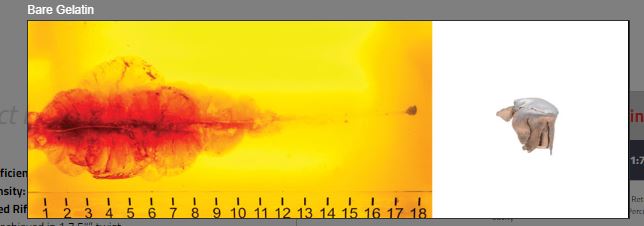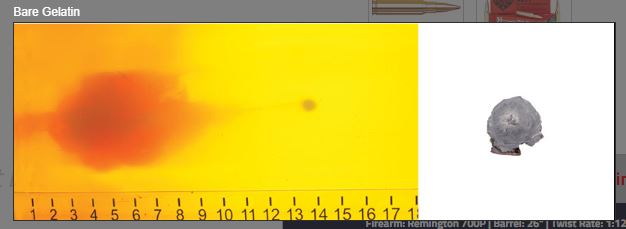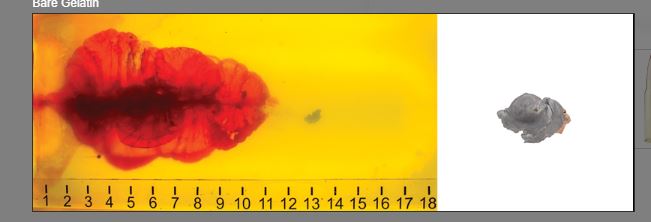To understand experienced or likely terminal results, we can take predictive (speculative) approaches, or empirical observational approaches using data from actual performance.
On the latter, the HornadyLE website is pretty cool - it has gelatin test images for all their LE line of ammunition. It is convenient, as I find their bullets work very well.
Ballistic gelatin tests are a standardised way to compare the performance of various bullets at various speeds in a consistent medium, that is designed to as closely as possible represent the "average" consistency of flesh & bone in a body.
The results are quite interesting and may be informative. It is unfortunate that no hunting ammunition results are published in a similar vein. If anyone has objective empirical data they have gathered from performance in actual animals to show, that would also be of great interest.
.223 75gr "TAP". this is a 75gr poly tipped bullet - basically a 75gr ELDM with a round tip to allow it to fit in AR15 magazines. Fired from a 10.5 inch barreled AR15 at 2200fps. Note the tremendously slow MV and the relative performance.
6mm ARC 106gr "TAP". This is a 106gr version of the ELDM. No, I don't know why. Although it is a slightly different bullet, it is more reasonable to expect that it performs very similarly to a 108gr ELDM, than it is to expect it to perform differently. Fired from an 18 inch barreled AR15 at 2625FPS.
.308 155gr ELDM. Fired from a 26 inch barrel at 2789fps.
Note the penetration and the relative size of the wound cavities. Regardless of the amount of theoretical potential energy the bullet has to transfer; this is the actual result of how it transfers that energy. These are not as different as predictive approaches would have you suggest.
Now there are some .308 loads that do produce a much larger wound cavity - 168gr ELDM at somewhere north of 2700 fps. However note that both this load and the 155gr .308 load penetrate less than the .223 and 6mm. That's most likely a function of the higher impact velocities causing more deformation.
Some food for thought.
Welcome guest, is this your first visit? Create Account now to join.
Welcome to the NZ Hunting and Shooting Forums.
Search Forums
User Tag List
+ Reply to Thread
Results 1 to 15 of 2541
Thread: 223 on deer
Hybrid View
-
09-08-2024, 02:14 PM #1
Similar Threads
-
Deer 1 & 2
By Scott29er in forum The MagazineReplies: 12Last Post: 19-02-2020, 07:33 PM -
First deer film of 2018, 300 NM & 3 deer
By Norway in forum The MagazineReplies: 10Last Post: 11-01-2018, 01:21 PM -
little bit of deer
By sneeze in forum Photography and VideoReplies: 11Last Post: 13-12-2012, 06:03 AM
Tags for this Thread
Welcome to NZ Hunting and Shooting Forums! We see you're new here, or arn't logged in. Create an account, and Login for full access including our FREE BUY and SELL section Register NOW!!





 7987Likes
7987Likes LinkBack URL
LinkBack URL About LinkBacks
About LinkBacks







 Reply With Quote
Reply With Quote


Bookmarks